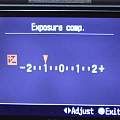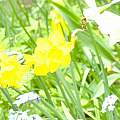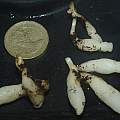A page of hints and tips
Why yellow flowers are always out of focus
Often because they are over exposed, that means the time the shutter is open for is too long, and as a result too much light is collected and instead of shades the maximum level of brightness is recorded over a large area. This can happen if the camera sets the exposure time based on the contents of the whole frame; when the frame consists of mostly dark vegetation with bright flowers in the middle then the exposure will be optimised for the background and the flowers will be too bright.
A solution is the exposure compensation setting often given in ev (exposure value) units - this allows the exposure set by the camera to always be adjusted by a set amount. By setting an ev of -1 it is possible to always under expose photos, and usually this will be suitable for taking pictures of flowers.
The opposite applies, for photographing small dark objects against a white background, a positive ev is suitable.
An alternative is to use a mode where the exposure time is set by a small area in the middle of the frame, however this is more tricky since when the exposure is set the camera must be pointed at the brightest spot.
The photographs show the same scene taken with exposure compensation values of -2, -1, 0, +1 and +2, the captions give the corresponding exposure times.
Photographing wet bulbs
Given time and equipment one can photograph bulbs to as high a standard as anything else, but when they are out of the ground briefly in the potting shed, using an on camera flash is the easiest thing. In this situation they tend to be wet and will produce 'specular' reflections. A solution is to use a polariser on the camera and another polariser on the flash and cross their polarisations. Typical polarisers consist of a plane polariser followed by a circular polariser nearest to the camera - used this way the camera side of the polariser has to be nearest the flash. Photographs show the polariser, and results with crossed and parallel polarisations.








